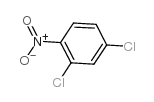Contribution of caffeine and flavanols in the induction of hepatic Phase II activities by green tea.
A Bu-Abbas, M N Clifford, R Walker, C Ioannides
Index: Food Chem. Toxicol. 36(8) , 617-21, (1998)
Full Text: HTML
Abstract
Aqueous extracts of green tea, at concentrations of 2.5. 5.0 and 7.5%, were administered to rats as the sole drinking fluid for 4 weeks. Hepatic glutathione S-transferase (GST) activity, determined using 1-chloro-2,4-dinitrobenzene (CDNB) and 3,4-dichloronitrobenzene (DCNB) as substrates, and UDP-glucuronosyl transferase activity, determined using 2-aminophenol as substrate, were induced but the effect was not always dose dependent. At the two highest doses, hepatic catalase activity was inhibited. In a second study, animals were exposed for 4 weeks to aqueous extracts (2.5%, v/v) of green tea, black tea (which has a much lower content of flavanols compared with green tea) and decaffeinated black tea. Treatment with the black tea enhanced GST activity, whether monitored using CDNB or DCNB, and the glucuronidation of 2-aminophenol. Treatment with decaffeinated black tea failed to modulate any of these activities, whereas treatment with green tea only enhanced the glucuronidation of 2-aminophenol. Finally, at this concentration of tea extract administration, black and decaffeinated black tea, but not green tea, suppressed catalase activity. It is concluded that neither flavanols nor caffeine are responsible for the induction of hepatic Phase II activities and inhibition of catalase activity in the rat.
Related Compounds
| Structure | Name/CAS No. | Molecular Formula | Articles |
|---|---|---|---|
 |
2,4-Dichloronitrobenzene
CAS:611-06-3 |
C6H3Cl2NO2 |
|
Control of the immune response to contact sensitizing chemic...
1987-07-01 [Br. J. Dermatol. 117(1) , 1-9, (1987)] |
|
Dose-response effects of lycopene on selected drug-metaboliz...
2000-06-30 [Cancer Lett. 154(2) , 201-10, (2000)] |
|
Dinitrochlorobenzene is inherently mutagenic in the presence...
1988-03-01 [Arch. Dermatol. 124(3) , 396-8, (1988)] |
|
Investigating protein haptenation mechanisms of skin sensiti...
2007-06-01 [Toxicol. In Vitro 21(4) , 723-33, (2007)] |
|
Mass spectrometric identification of covalent adducts of the...
2008-08-01 [Toxicol. In Vitro 22(5) , 1169-76, (2008)] |